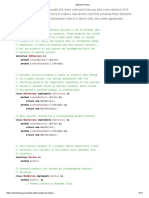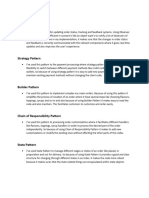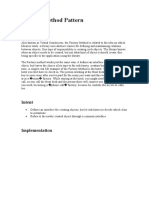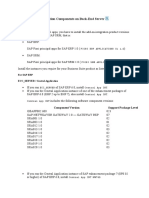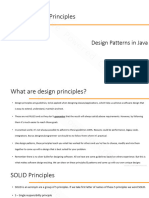0% found this document useful (0 votes)
6 views14 pagesFactory Pattern and Abstract Factory
The document outlines the implementation of the Factory Pattern for a Vending Machine system that creates beverages like Coffee and Tea. It details the steps involved, including defining an abstract product interface, creating concrete product classes, and implementing abstract and concrete factories. The client interacts with the factory to order beverages without needing to know the specific classes involved, ensuring flexibility and interchangeability in product creation.
Uploaded by
monicamathu2415Copyright
© © All Rights Reserved
We take content rights seriously. If you suspect this is your content, claim it here.
Available Formats
Download as PDF, TXT or read online on Scribd
0% found this document useful (0 votes)
6 views14 pagesFactory Pattern and Abstract Factory
The document outlines the implementation of the Factory Pattern for a Vending Machine system that creates beverages like Coffee and Tea. It details the steps involved, including defining an abstract product interface, creating concrete product classes, and implementing abstract and concrete factories. The client interacts with the factory to order beverages without needing to know the specific classes involved, ensuring flexibility and interchangeability in product creation.
Uploaded by
monicamathu2415Copyright
© © All Rights Reserved
We take content rights seriously. If you suspect this is your content, claim it here.
Available Formats
Download as PDF, TXT or read online on Scribd
/ 14




















